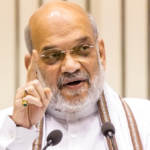China’s Military Drills Around Taiwan
China’s military drills around Taiwan, a continuation of a long-standing tension, are designed to test its ability to “seize power” over the island. These drills, the largest in over a year, started just after Taiwan inaugurated its new president, Lai Ching-te, whom Beijing dislikes for supporting Taiwan’s independence and unique identity.
Beijing’s Stance on Taiwan’s New President
Beijing has called Lai a “dangerous separatist” and criticized his inauguration speech, where he urged China to stop its growing intimidation of Taiwan under President Xi Jinping. The PLA began the exercises on Thursday, sending warships and fighter jets around Taiwan and its nearby islands as a “strong punishment for separatist acts.”
Objectives of the Military Drills
On Friday, the PLA’s Eastern Theater Command continued the drills to test their ability to take power, launch joint attacks, and occupy critical areas around Taiwan. China views Taiwan as part of its territory due to historical and cultural reasons and has promised to take the island by force if necessary. Most Taiwanese people, however, do not want to live under Chinese rule. Xi Jinping, China’s most authoritarian leader in decades, insists that Taiwan’s unification with the mainland is inevitable.
Scale and Scope of the Exercises
These two-day exercises, a show of China’s military might, involve China’s army, navy, air force, and rocket forces operating around the Taiwan Strait and other areas surrounding Taiwan. For the first time, China’s Coast Guard is also involved, operating around Taiwan’s outlying islands near China’s southeastern coast. The drills include simulated attacks, amphibious landings, and other offensive and defensive maneuvers.
Chinese state media showed footage of PLA soldiers moving artillery and missile systems into position but did not show any live fire. Taiwan’s Defense Ministry condemned these exercises as “irrational provocations” and responded with sea, air, and ground forces. The international community, including the US and its allies, expressed concern over the escalation of tensions in the region.

Taiwan’s Response
From Thursday morning to Friday morning, Taiwan’s Defense Ministry reported detecting 49 Chinese aircraft, including 35 that crossed the Median Line, an unofficial boundary in the Taiwan Strait that has been a source of contention between the two sides. They also detected 19 Chinese warships and seven Coast Guard vessels near the strait.
Taiwan’s presidential office expressed regret over China’s threats to Taiwan’s democracy, freedom, and regional stability through unilateral military provocations. They added that Taiwan is confident in its ability to protect national security.
Domestic and International Implications
China’s military drills often aim to impress a domestic audience while signaling international intentions. State media has increased coverage of these drills. Zhang Chi, a Chinese military expert, explained on CCTV that the PLA’s exercises focused on practicing a new mode of blockading Taiwan. He noted Taiwan’s reliance on exports and imports, especially energy, and suggested that a blockade could easily lead to economic collapse.
Strategic Targets
The exercises south of Taiwan target Kaohsiung port, the island’s largest port and a key naval base. Drills east of Taiwan practice cutting off energy imports, escape routes, and support lines from the US and its allies.
The US, a key player in the China-Taiwan conflict, maintains close but informal relations with Taiwan and is legally bound to supply the island with defensive weapons. Zhang mentioned that the drills succeeded by entering waters near Wuqiu and Dongyin, strategically vital for Taiwan’s defense operations, thereby potentially escalating tensions with the US.
Increased Provocation with Coast Guard Involvement
Analysts noted that the involvement of China’s Coast Guard near Taiwan’s outlying islands is a significant new aspect of these drills. This follows similar exercises in August 2022 and April 2023. Carl Schuster, a former US Pacific Command intelligence director, called the Coast Guard’s involvement provocative and expects such activities to continue, potentially becoming the norm and turning exercises into actual operations at any time, thereby escalating the conflict.

Political and Social Impact
Craig Singleton, a senior China fellow at the Foundation for Defense of Democracies, said these drills do not indicate an imminent invasion threat. However, they blur the lines between peace and war, potentially serving as a pretext for an invasion in the future. This view is shared by many experts, who believe that while the risk of a full-scale invasion is low, the possibility cannot be entirely ruled out.
According to Lionel Fatton, an assistant professor at Webster University in Geneva, the exercises are not just about military might. They are a strategic move to pressure Taiwan’s new administration and influence its stance. Beijing’s aim is to exploit and exacerbate internal divisions within Taiwan, potentially weakening it internally and polarizing its political and social structures.











